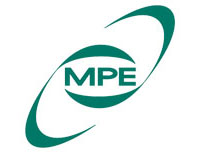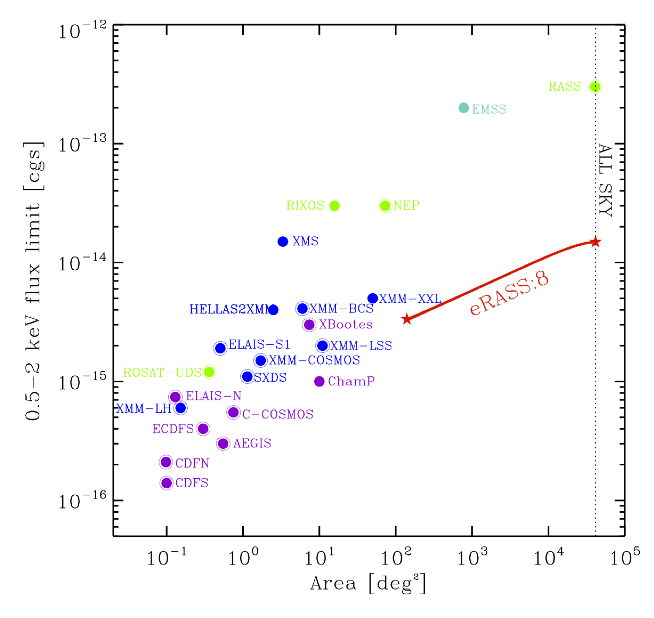 |
 |
X-ray Surveys at MPE
X-ray surveys trace the accretion history of the universe, offering a highly efficient method of pinpointing growing black holes in galaxies over a wide range of redshifts. Chandra and XMM-Newton surveys have yielded AGN samples capable of characterising the evolution of accretion power in the Universe, via the X-ray luminosity function (XLF; e.g. Hasinger et~al. 2005; Barger et~al. 2005; Silverman et al. 2008; Aird et al. 2010, Ueda et al. 2014). These surveys have also been highly influential in broadening our understanding of the co-evolution of supermassive black holes and galaxies via the characterisation of various host properties of AGN. The extraordinary sensitivity of the current generation of X-ray observatories, particularly Chandra, to point-like X-ray sources has transformed such investigations by revealing large populations of active galactic nuclei (AGN) in galaxies where the accretion activity in other wavebands is either obscured, or overwhelmed by host galaxy light.
 |
Determination of the accretion history and its relationship to galaxy evolution cannot be achieved using X-ray data alone. For example, a basic requirement is also to determine the redshifts of the X-ray sources to determine their luminosities and evolution. This has proved surprisingly difficult, for a number of reasons.
Firstly, the X-ray position of the sources and the associated positional error are not univocally determined but rather depending on data reduction and analysis procedure (see Hsu et al. 2014 and Nandra et al. 2014 for clear examples). This reflect as an uncertainties in correctly determine the correct counterpart at other wavelength.
Secondly,the depth of current X-ray observations is such that the multiwavelength counterparts of the X-ray sources are often extremely faint. This makes even the identification e.g. of optical or NIR counterparts challenging. Determining their redshifts is even more difficult, because the vast majority are too faint for spectroscopic identification. Despite major efforts, the spectroscopic completeness of the deepest X-ray samples are less than 50% (e.g. Szokoly et al. 2004; Trouille et al. 2008). Photometric redshifts can be used to mitigate this spectroscopic incompleteness, but require very deep data in as many bands as possible. This can be difficult to acquire in wide fields. Also, because the vast majority of X-ray point sources in deep surveys are AGN, special consideration is required to yield accurate photo-z's (Salvato et al. 2009, 2011, Hsu et al. 2014).
Sensible to these issues, our group is committed to provide through these page an homogenoeus approach to the X-ray surveys that we are working on. For each of the surveys we plan to provide reduced X-ray data, X-ray catalogs together with catalogos of the optical counterparts, photometric redshift and redshift probability distribution, P(z). Links to the scientific results that we obtained from these works will be also provided.
- Currently we provide the data for AEGIS-X ( Laird et al. 2009; Nandra et al. 2015) and the Xray data centered on GOODS-S and covering the entire CDFS (Xue et al. 2011; Lehmer et al. 2005; Virani et al. 2008; Hsu et al. 2014). The data are described in detail in Nandra et al. 2015 and Hsu et al. 2014, respectively.
- SPIDERS (Spectroscopic Identification eROSITA sources) is a spectroscopic survey part of eBOSS aimed to follow-up the eROSITA counterparts. Currently we are targeting ROSAT and XMMSLEW sources. The papers presenting the targeting for the X-ray extended and pointlike sourves are Clerc et al 2016 and Dwelly et all 2017. Data are provided here.
- Here is the direct access to the new ROSAT/2RXS point-source catalog (Boller et al, 2016).